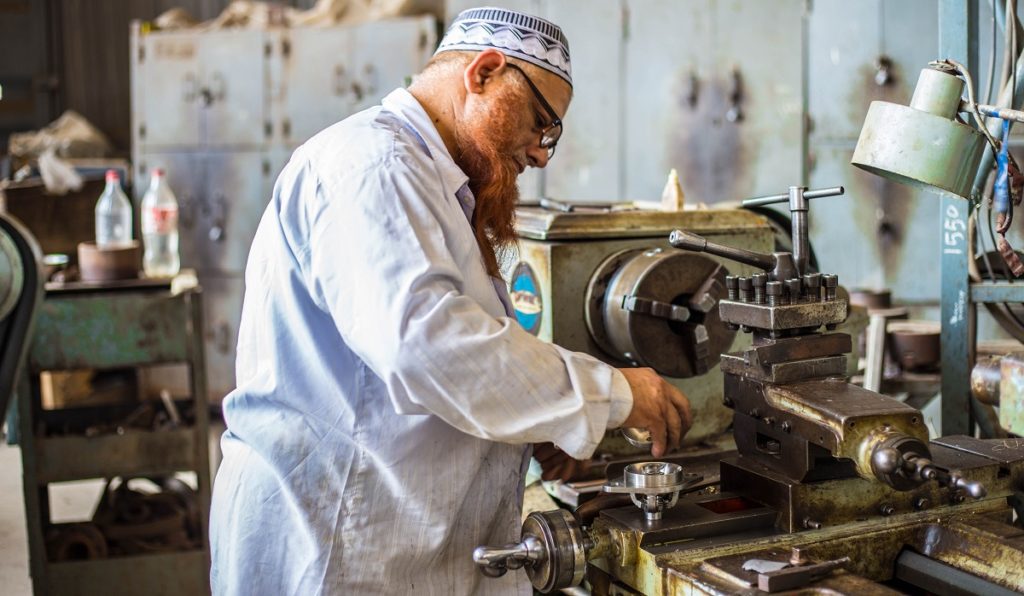When Tradition and Innovation Collide: Taking a Family Business into a Prosperous Future
From the ghosts of the past to the spirit of the future, follow the journey Aslihan traveled with a traditional and hierarchical business into a new modern paradigm.

Agility and innovation are buzzwords so commonly used in business discourse these days, that they seem to have lost some of their meaning for many. Though masked by jargon, confusion and misinterpretation, these attributes are not only the secret weapon of those businesses that continue to grow and thrive in the digital age, they are essential to any business’s very survival, especially smaller players hoping to compete with larger and better-resourced competitors.
The business that my Change Diary describes struggled with this issue when I was brought on board as a change consultant. Located in Turkey, in the very centre of Bursa’s industrial node, the company had been running for decades in the steel manufacturing industry, making parts for a wide variety of construction projects. The business was, at the time, a medium-sized enterprise of over 40 employees – 10 of them white-collar managers while the remainder were made up of machinists and employees on the factory floor.
Two cousins had taken over the company at a young age following the death of their grandfather – the business’s founder and the family patriarch. Both cousins were fit for the role in terms of expertise: they were both engineers trained at Istanbul’s finest university. However, their differing visions for the future of the company had caused confusion about how to contend with its competitors and the shrinking margins that threatened its survival.
The Challenge
At our first meeting, I learned that the cousins (let’s call them Mr. A and Mr. B) had only taken the company over a year previously. Mr. A, the elder cousin, was 30 years old and served the role of General Manager. Mr. B was 27 at the time and was in charge of marketing and project management.
Despite their youth, each took his role on with competence and a high level of responsibility. They worked extremely hard for long hours, but were nonetheless faced with more problems than they knew how to solve.
- The steel manufacturing sector in general was facing diminishing margins and struggled to achieve sustainable growth. The two executives knew they would have to diversify into other areas but were unsure how to do so and what to prioritise.
- It was evident that the existing framework of the business would not allow for the kind of agility to realise the desired growth trajectory.
- There was a desire to become a high-end, technology-driven company capable of competing through innovation, but a traditionalistic organisational culture that had taken root during the founder’s time at the helm was proving to be stubbornly difficult to alter.
From the ghosts of the past to the Spirit of the Future
In Turkey, a country where well over 90% of the population is Muslim, tradition is understandably important – both as a structure of family life and in business. Recent studies into the Turkish business landscape show similar adherence to tradition, with one eye-opening report showing that the country’s dominant management styles are Authoritarian (53%), Paternalistic (25%), Consultative (13.6%) and finally, Democratic (8.5%.). As a business that had for many years been entirely run by the family patriarch, this organisation was very much set in its ways. Both Mr. A and Mr. B had great respect for their late grandfather, whose opinions, management style, and business perspectives were deeply entrenched at all levels of the organisation, as is common in family businesses.

It was clear that the business’s goal of moving toward a more democratic management system – one in which all employees would feel emboldened to make suggestions for modernising changes to the business – would involve much communication and reinforcement. The White-collar management team needed to be encouraged to involve their teams more in decision-making, while the employee teams themselves would need to be coached in embracing a more agile and innovative way of working.
Suddenly, a new beginning
The essence of business agility is to be responsive. To know when a system isn’t working and should be replaced, but also to look out for opportunities – wherever they may come from – and to embrace them even if it wasn’t in the original plan.
With this new outlook within the organisation, it wasn’t long before just such an opportunity came along, and the business entered into a partnership with one of the world’s major energy companies, which contracted the business to manufacture components for them.

Driven in large part by the executive sponsorship of Mr. A – who was active in managing the relevant communications within the company – the organisation was ready when this opportunity came along. A new factory needed to be rented, and some of the existing staff complement would need to be transferred to the new premises.
Such a sudden shake-up would normally be expected to cause some hesitation on the factory floor, but thanks to the new business outlook that had begun at the top and trickled down to every other organisational level, this large change was realised without much trouble.
Mr. A and Mr. B were each given a clear responsibility: Mr. A was responsible for managing any resistance to the change at the old premises, and Mr. B was tasked with developing the relationship with the new partners and overseeing the transfer of some staff to the new factory.
Easy Adaptation for a blended organisation
The energy company which would be served by the workers at the new factory would not only be moving locations – they would be assimilating into a new organisation and effectively would be employees of the partner company. Knowing that this extreme change would involve adapting to different systems, with different expectations and a different cultural norm to their long-term employer, we worked with the management teams to drum up support for the change and ensure the highest possibility of success.
The more experienced line managers, and those with the best command of English, were allocated to the new factory in order to smooth the transition and build rapport between the organisations. With the assistance of experienced leaders from the global partner organisation, the requirements, expectations, and cultural codes of the global company were communicated and reinforced. Since the focus was to be the improvement of the manufacturing business’s ISO standards to be brought in line with the new partner’s requirements, existing staff were successfully encouraged to participate, share ideas, and work attentively to make the partnership a success.
It was in this atmosphere of eagerness, innovation and change that my own involvement in the project came to an end. Our mandate in this project had been to prepare the executives and staff for the change at hand – to encourage them to approach the change with open minds and to internalise our mission of increasing business agility.
Though the change was just beginning, it was clear that the organisation’s preparedness for its arrival was very different to what it had been before. With the change already underway, the responsibility was turned over to the international partner, whose would thereafter take the baton and continue to upskill and train the staff at their new factory.
From strength to strength into the future
Some months after completing my work for the organisation, a check-in with the company showed just how powerfully strategic this family-led business has become since the intervention. During our consultancy, a new company had been founded. This new business is 40% owned by the existing company, with 60% owned by one of the energy industry’s European giants. The businesses have flourished enormously: the revenue of the new company doubled that of the parent company within a year, with even stronger growth predicted for 2019. The owners have found a way to balance the traditionalistic values of their grandfather’s business with the new European-inspired corporate culture, opening new opportunities to network and grow the operation even more. With a clear vision and a strong understanding of why the change was needed (and what it would take to implement it successfully), the organisation has a renewed sense of purpose and direction that will help it to remain agile and succeed for years to come.